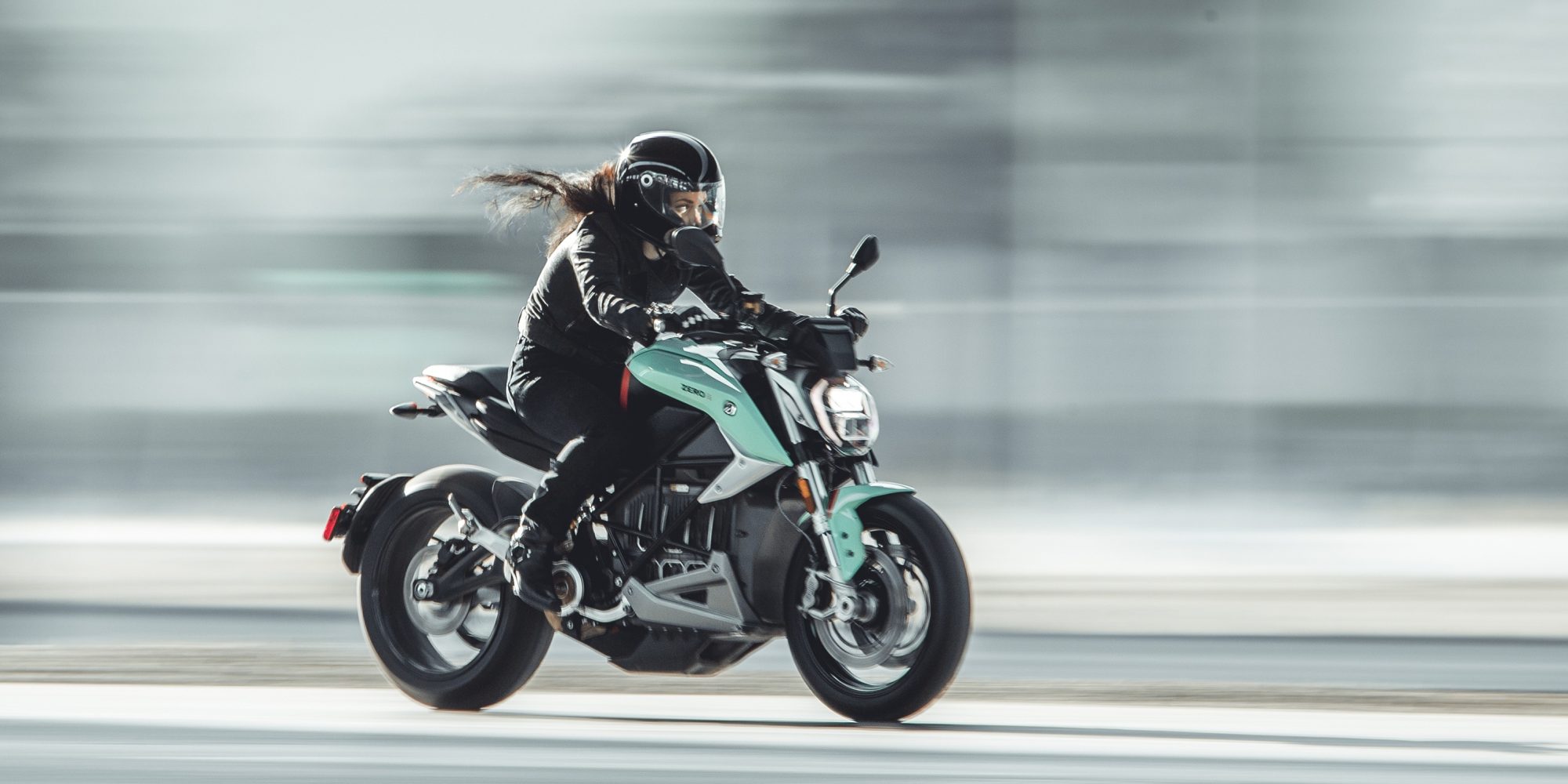As high-tech and powerful as modern motorcycles are, the simple fact of the matter is that every single machine with two wheels and a motor between them has two contact patches with the road, each about the size of a credit card. Whether you ride a Honda Ruckus scooter or a Ducati Panigale V4R, they both have tires—and those tires should be looked after properly.
Motorcycle tire maintenance is not something that is widely discussed during your MSF training course, as the focus there is to give you the foundation of skills to ride safely and enjoy the hobby for many years to come. There are special classes you can attend that focus on motorcycle maintenance, but these are few and far between—and more often than not, you’ll discover a lot more about your bike through spending a Saturday afternoon in the garage, covered in chain grease and motor oil and cursing a scraped knuckle or three, than anywhere else.
That’s why we thought it would be a great idea to give you the absolute basics regarding how to look after your tires—including what to look for in terms of safety and wear, and what you should be looking for when you inevitably have to replace them. This is not the be all, end all guide to tires; it’s a beginner’s guide so you can ride safely and identify things that may be issues so more advanced eyes can then be brought in to look at them.
Why Motorcycle Tire Maintenance Is Crucial
As touched upon in the introduction, your tires are the only actual part of your bike that should be touching the road, at least while it is in motion. Think about it in terms of physics. A motorcycle weighs several hundred pounds, you probably weigh anywhere between one and three hundred pounds, there is a flammable liquid that weighs just about 8 pounds per US gallon that you add to the bike, and all of that—every single bit of it—goes to two areas of rubber that are each the size of a credit card.
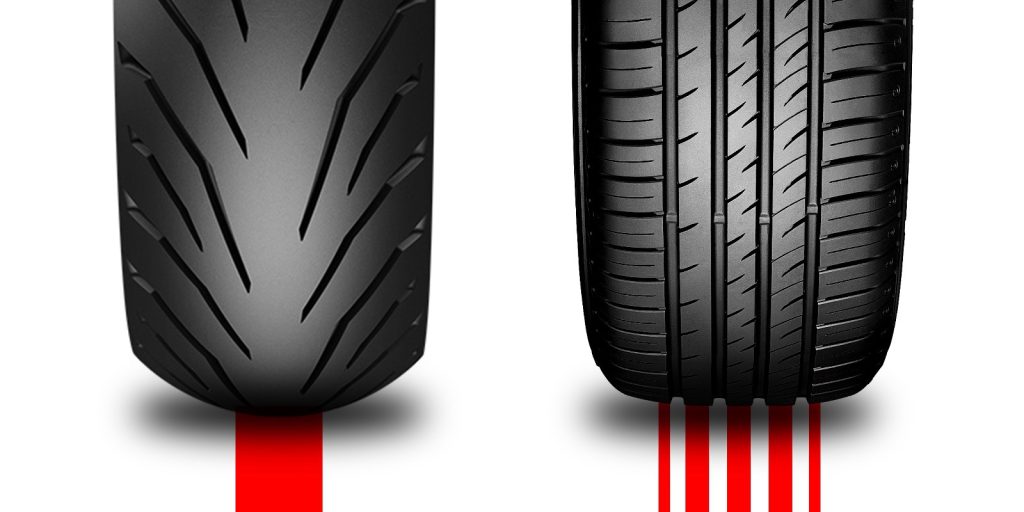
Frankly, that is an insane amount of weight to be focused down into two tiny contact patches. Yet, because of the compounds that the tires are made of, combined with the rough, grippy surface of most pavement, we are able to ride, lean, turn, and stop through those two contact patches. In other words, tire maintenance is crucial because your ability to enjoy the hobby safely, if you’ll pardon the pun, rides on it.
It is also crucial because unlike on a car, if we, as riders, lose one of those contact patches in an unintended manner, there is no backup. A bald, frayed, or deflated tire on a car leaves three other tires to maintain control and grip. Encounter a bald, frayed, or deflated tire on a bike, and you’re more than likely going to lose traction and slide out in the best case scenario—or get launched into a high side in the worst case.
How to Inspect & Maintain Your Tires
Inspecting Your Motorcycle Tires
Before each ride, visually inspect the entire contact surface of your tire. This means you’ll have to roll the bike back or forward a couple of feet to get the entire tread inspected. You’re looking for rocks, thorns, screws, nails—basically anything that could affect the contact patch.
Also look for small pits or holes in the tread, as these could be a slow puncture, or an “Almost there” puncture that just needs the weight of a rider to start leaking.
If you find one, put your ear close to it and listen/feel for air escaping. It may be too slow to hear or feel, so if you’re wanting to make absolutely sure, mix some water and dish soap together (or if you’re in the middle of nowhere, saliva works), and wipe it over the hole with a rag or sponge.
If you are absolutely out of options, glass cleaner such as Windex (if only a few sprays are used) will also work. If it starts to blow a soap bubble, you have a slow leak. If no bubbles form, it’s holding pressure.
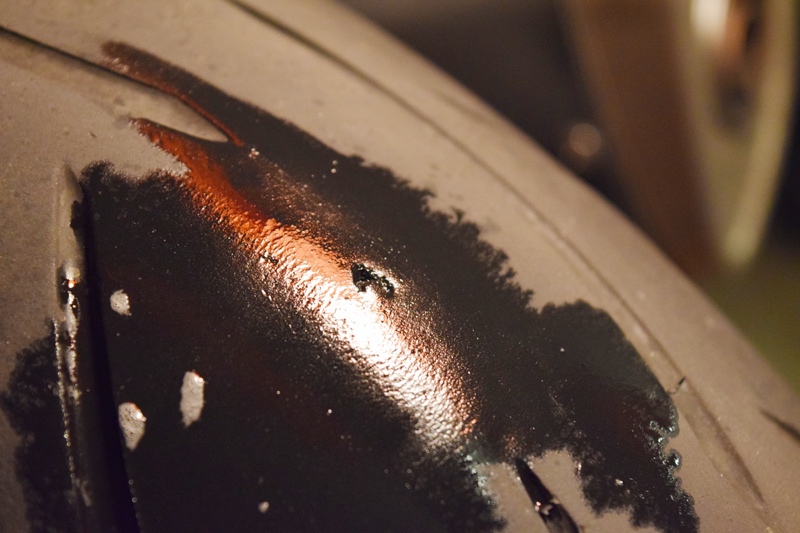
If there isn’t anything in the tread and there are no punctures, check your pressures. You should check your pressures at least once a week, although it is better to check before each ride. Some higher-end motorcycles have tire pressure monitoring systems, and while those are handy to have, it still pays to manually check. This is because motorcycle tires, by the nature of being softer than car tires, can vary far more due to road and air temperature.
Your front tire may be 39 PSI on a hot day, for example, but on a cooler day, it may be at 37 PSI. As long as it’s within one PSI of the correct pressure, you should be alright, but it never hurts to add or take away a little air to be 100% certain.
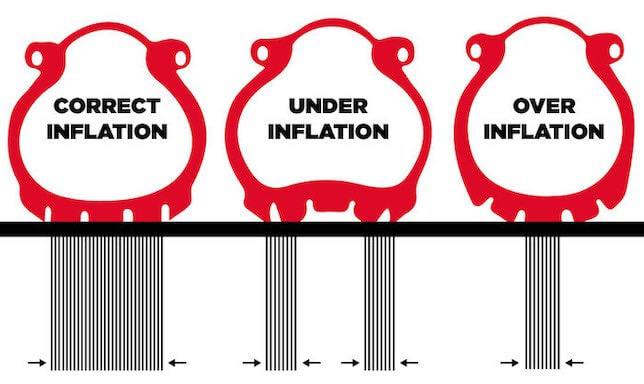
If the pressures are good, there are no foreign objects in the tire, and there are no leaks, the last “must do” check is tread depth. Most motorcycle tires will have a “wear bar,” or a little bit of rubber every three or four treads, and as long as that is not even with the surface of the tire, you’re 99% okay.
If you have a tread depth gauge, or a penny in a pinch, you want the tread to be more than 3/32”, (or covering Lincoln’s hair). Anything shallower, and if you hit a puddle or bit of sand, it is very likely that the tire will lose traction and could cause you to meet the road in a most unpleasant manner.
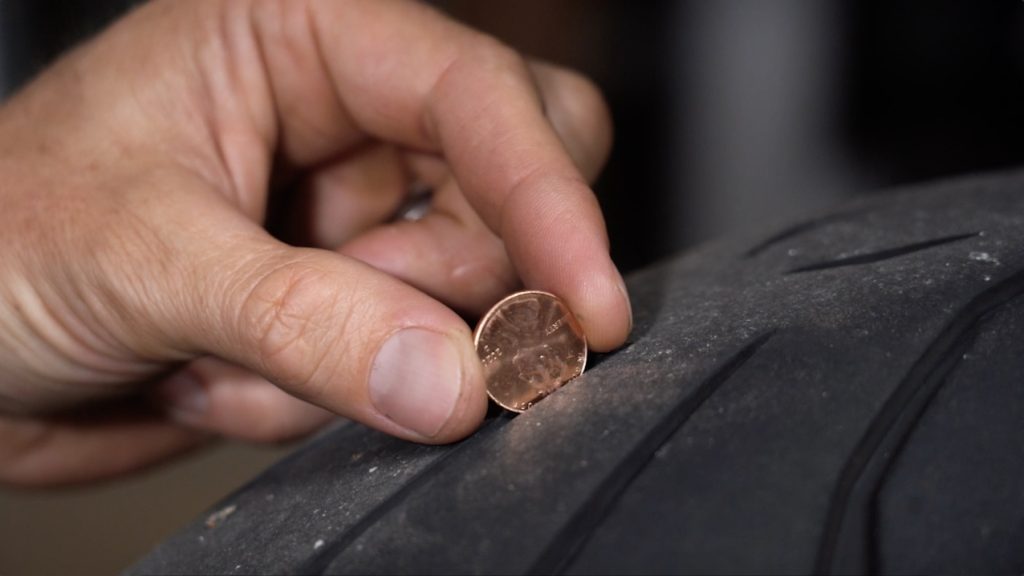
Another worthwhile check for your tires is to locate the date stamp on the sidewall (left side of the front tire, right side of the rear tire, if both are mounted correctly), which is a series of four numbers. The first two, 01 to 52, is the week that the tire was manufactured, and the last two are the year. So, a tire reading “1621” was made on the 16th week of 2021.
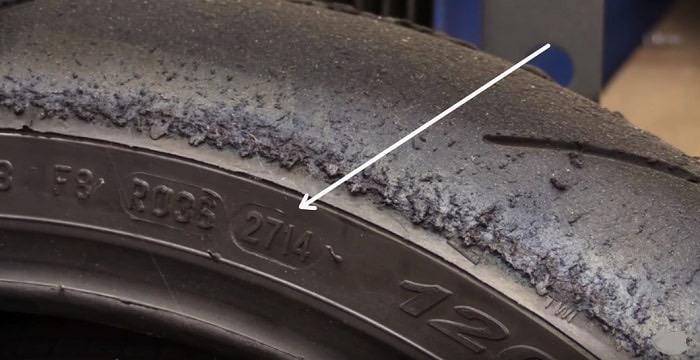
For sport tires, you generally want to replace them around the two year mark, while replacing touring and cruising tires around the three year mark. Each manufacturer is different, so always look up your make and model of tire and read the information package for it online.
If your tire is beyond the recommended age range and you’ve confirmed that against manufacturer information, you should replace it—even if it still seems to have good tread left.
Motorcycle Tire Maintenance
So if your tire has passed all of the above checks—namely, good tread, no punctures, right pressure, and within the age range, you have yourself a good tire! The objective is to now keep it in good condition, and there are a few simple measures you can take to do so.
The first thing to do with any motorcycle tire is to make sure that it is mounted and balanced properly. This can be done at home if you have a tire balancer, but more often than not, an appointment at a motorcycle repair and service shop that doesn’t take much time and doesn’t really cost all that much can make sure your wheels and tires are balanced. This is important so that your tires wear down evenly, extending their life and grip.
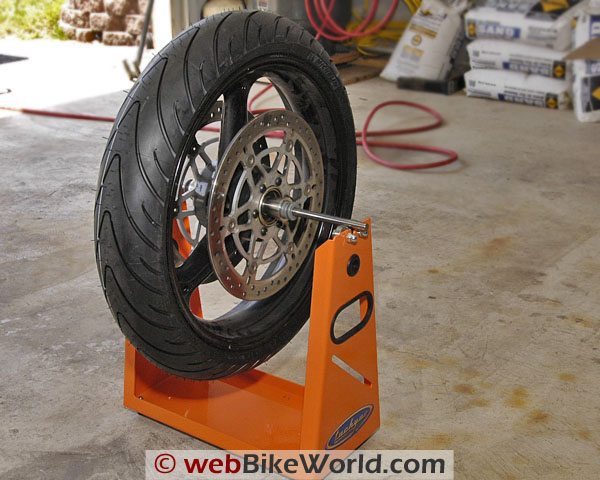
Once a week, or after a ride where you know you’ve ridden through some oil or grease, use some water mixed with mild soap and give your tires a gentle washing. If you have a soft bristle or silicon brush, that will also do the trick, but don’t use a heavy duty stiff bristle brush.
Also, don’t use anything other than mild soap and water, as some protectants that advertise extending your tire life actually draw oil out of the rubber that is supposed to be there, causing it to degrade faster than normal. It’s especially important to clean your tires if you spill gasoline, brake fluid, chain lube, or engine oil on them, as those can cause damage to the rubber on top of being slippery.
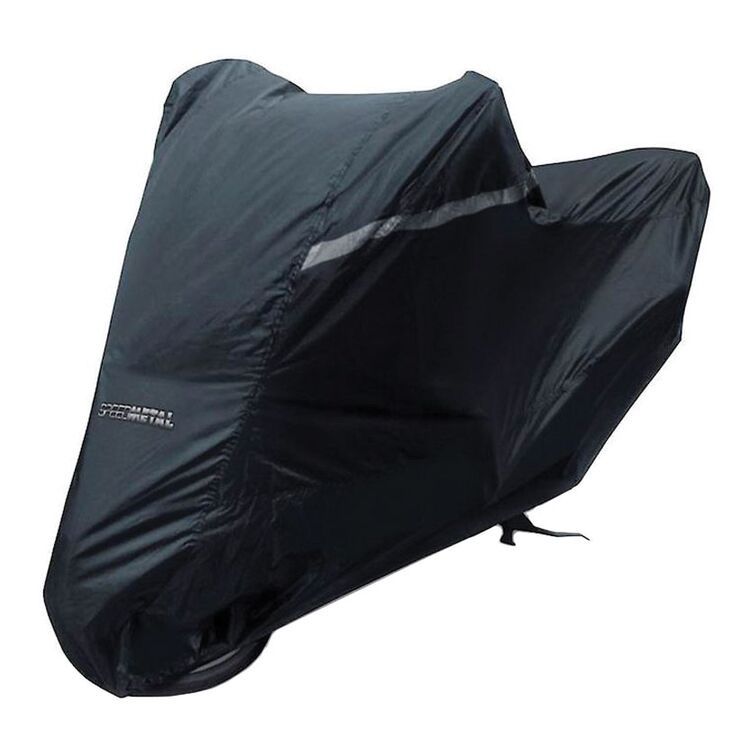
If at all possible, when parking your motorcycle at home, try to park it in a shaded area or in a garage. The sun can cause the tires to dry out if left exposed for too long. If you cannot park the bike in the shade or in a garage, invest in a decent motorcycle cover, so you can keep the sun off the paint and tires and keep your bike looking good and riding well.
Need a Replacement? How to Choose the Right Tire for Your Needs
So your tire is damaged, past its age rating, or has run down its tread? Then it is time to find a replacement tire!
The very first things you need to know (and they are more often than not listed in the owner’s manual for your bike) are your tire sizes. For example, for my Kawasaki Ninja 650, my owner’s manual lists 120/70 ZR 17 for the front, and 160/60 ZR 17 for the rear. If that looks like some form of secret code, it’s actually quite easy to understand.
Let’s take the front tire, 120/70 ZR 17, and break it down. 120 is the width of the tire in millimeters, and 70 is the height of the tire in millimeters from bead to highest point. Z is the speed rating—in this case, tires that can go more than 149 MPH—and R means radial construction. The last number, 17, is the inner diameter of the tire in inches (basically your wheel/rim size).
The next important step is to determine your usage. If you ride a sportbike, you will probably end up getting sport tires. A road-touring ADV or sport touring motorcycle can take touring tires, while an ADV that will be going off-road will want adventure or “knobby” tires.
Almost all manufacturers will make at least one of each type of tire, so if you have a preferred brand, you can stick with it in most cases. If you’re unsure what tire you want, keep in mind that the OEM tires that come on your bike were designed and/or tested to work especially well with that bike—so if all else fails, buy another set of tires from the OEM brand.
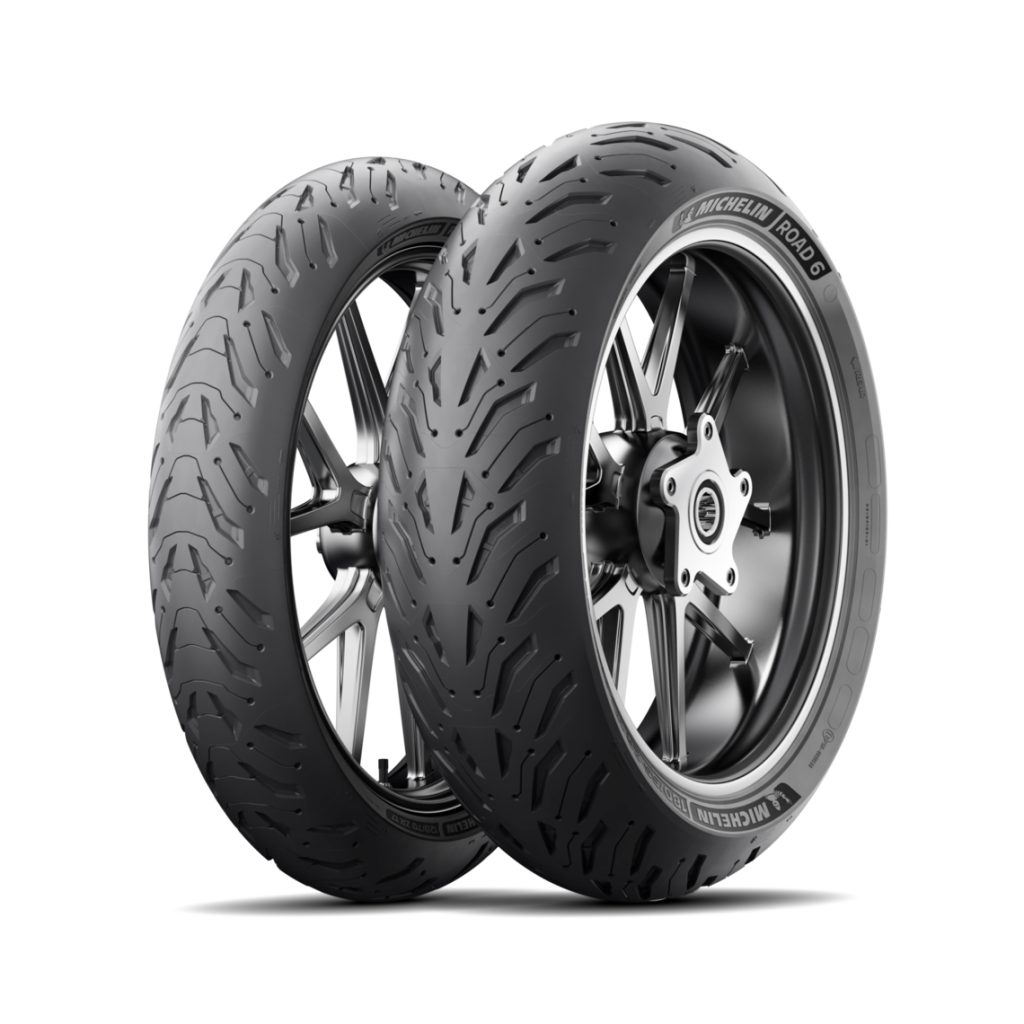
Once you’ve found the brand and style of tire you want, you need to determine what feature of the tire is most important to you. Do you want a semi-slick sport tire that will wear out quickly but give you amazing grip while the tread lasts? Do you want a long-duration tire so you can cruise coast to coast on a continental cruiser? Do you want a tire that performs well in the rain, if your area is prone to sudden rain showers and you’re caught out in one?
You can find tires of all types and with a wide variety of features. If you’re unsure about the features you want, you can never go wrong with a moderate duration road tire that has good grip and has rain siping for the chance you might come across some rain.
The final step is to shop around! Look online using tire store websites to browse tires in the right size and features for you. Quite often, if you buy through a dealer, an incentive many will throw in is anywhere from 5% to 50% off your next set of tires. Also, never discount quite literally walking into a motorcycle tire shop or service place and simply asking “I have X bike, I need new tires, any recommendations?”
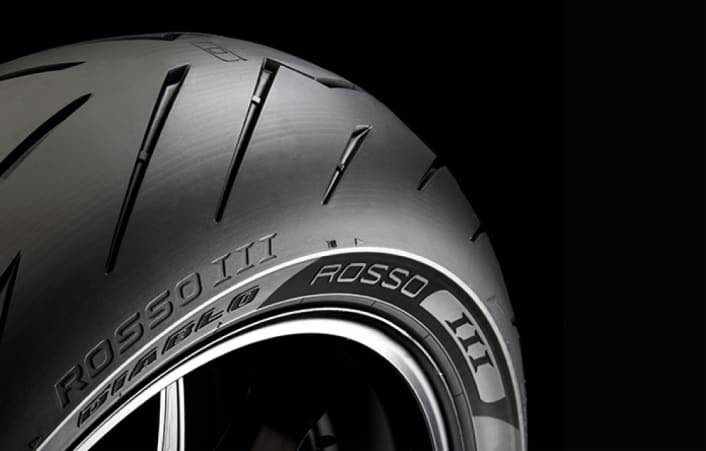
Remember, tire companies want their rubber on your wheels, so shopping around helps you find the best deal for the best tires. All the major brands will have motorcycle tires, such as Michelin, Bridgestone, Goodyear, Pirelli, Continental, Dunlop, and the rest.
Some brands, such as Michelin, Pirelli, and Dunlop specialize in sport tires as they are official sponsors for many racing teams and series, while other companies such as Bridgestone, Continental, and Goodyear will focus more on the duration and life of a tire in balance with grip and other features. Ask politely on online forums dedicated to your make of bike, ask dealerships, ask tire shops, and look things up online.
You can never do too much research, because as I stated at the very beginning, your tires are the most important bits of your bike. After all, they’re the only parts that should ever touch the road when moving.

